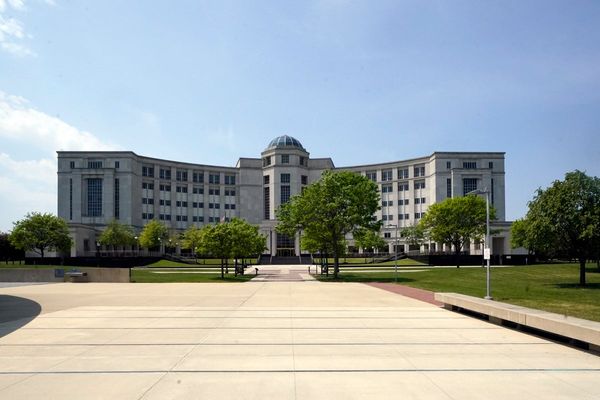
The east side of Lake Macquarie and Newcastle have made a list of the top regional districts in Australia for house value growth over the past three decades.
A new CoreLogic report says the median value of a house in east Lake Macquarie jumped from $159,000 in 1992 to $923,000 in July this year, an increase of 480 per cent. The increase equates to a rise of 6 per cent a year in annual compounding terms and placed east Lake Macquarie ninth on CoreLogic's national regional growth ranking.
In Newcastle, house values increased from $162,000 in 1992 to $913,000 in July this year, up 462 per cent, or 5.9 per cent in annual compounding terms.
The rise in property values in both areas easily outstripped the average national inflation rate of 2.5 per cent a year since 1992.
Across Australia, property values are up 382 per cent in 30 years.
Growth in Newcastle and Lake Macquarie exceeded the 30-year increases in Sydney (449 per cent) and Melbourne (459 per cent).
The CoreLogic analysis uses a value index which takes into account house characteristics, rather than relying solely on sales transactions.
The report says house values in west Lake Macquarie have also risen faster than the national average, up 410 per cent in three decades from $158,000 to $807,000.
NSW regional house values have leapt forward 98 per cent in the past decade, compared with 50 per cent from 1992 to 2002 and 43 per cent from 2002 to 2012.
Only regional Tasmania (104 per cent) has higher growth in the past 10 years. Regional Queensland (59 per cent) and Victoria (76 per cent) have trailed behind.
CoreLogic research director Tim Lawless said regional NSW prices had boomed in the past three years.
"If you look at some of these numbers, it just highlights that time tends to heal all wounds, that markets do trend higher even though they are cyclical," he said.
"If you look at the region, Lake Macquarie and Newcastle houses seem to show the strongest growth rate.
"They're also the most expensive markets in the region. You probably take that back to the inherent scarcity of housing in those markets, the fact they are good locations and are well established, so there's not a great deal of land that can be developed. That probably helps to push up the underlying land value more than other markets would."
The 30-year house price data coincides with the release on Monday of new figures showing the elevated rate of migration from capital cities to regions slowed in the June quarter.
The Regional Australia Institute's Regional Movers Index shows Lake Macquarie was in the top five destinations across Australia for capital-city refugees shifting to regional areas in the June quarter, behind Gold Coast, Sunshine Coast, Greater Geelong and Wollongong.
Newcastle was sixth on the list, and the two local government areas' combined popularity would place the city third in the rankings behind only the two south-east Queensland destinations.
Of the six most popular regions, Lake Macquarie (10 per cent) and Newcastle (7 per cent) had easily the highest increases in migration from capital cities during the full 2021-22 financial year.
Migration from capitals grew 1 per cent in Gold Coast last financial year and 4 per cent in Sunshine Coast but fell 12 per cent in Geelong and 9 per cent in Wollongong. Migration from capitals grew 6 per cent in Maitland in 2021-22, 3 per cent in Port Stephens and 9 per cent in Cessnock.
Migration from cities to regions fell 16.5 per cent across Australia in the three months to June from a five-year high in the March quarter.
"This quarterly fall is significant, although it partly reflects ordinary seasonal patterns in people movement. June and December quarters tend to have reduced flows from cities," the report says.
"Six months into living with COVID, there is an early sign that migration from capitals to regions is moderating from the elevated flows that prevailed during 2020 and 2021."
The report also notes that the "most significant development" in migration patterns has been the resumption of population flows from regions to capitals.
"These flows in both the first and second quarters of 2022 accounted for around 4.5 per cent of all relocations, on par with the two years prior to the pandemic.
"The resumption of these outflows, combined with the reduced inflows to regions, has been driving net migration to regions lower.
"Net migration to regions in the June 2022 quarter fell significantly, down by 35.1 per cent to be 41.1 per cent lower than a year earlier."
But net migration to regions was still 30 per cent higher than in the two years before the pandemic.
"The sheer level of net migration during the lockdown period of COVID is likely to have represented a step change in the overall size of many regional communities.
"The latest reduction in net inflows will hopefully be giving many communities some breathing space to adjust."
WHAT DO YOU THINK? We've made it a whole lot easier for you to have your say. Our new comment platform requires only one log-in to access articles and to join the discussion on the Newcastle Herald website. Find out how to register so you can enjoy civil, friendly and engaging discussions. Sign up for a subscription here.







